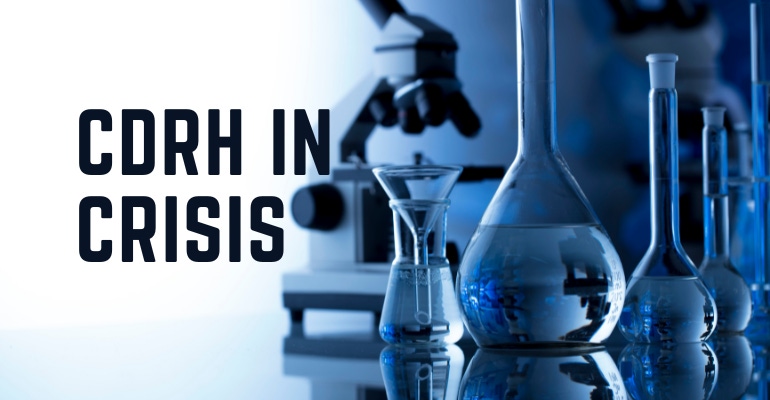FDA's Device Program in Crisis, Outsiders Warned
In what year did a subcommittee of academic and industry outsiders compose an eye-opening report on FDA's device program?
April 17, 2023

In July 2013, a subcommittee of FDA’s science board released an eye-opening 37-page report on what it called the financial and strategic threats confronting the Center for Devices and Radiological Health’s (CDRH) regulatory science and engineering programs.
Composed of seven academic and industry outsiders, the subcommittee could say things no FDA employee would be allowed to say.
Foremost among these was the warning that politically imposed loss of federal investment in CDRH regulatory science “will interfere with the regulatory approval of emerging technologies and in doing so cost lives.”
The report noted that the medical device industry was “setting record pace in advancing life-saving technology” and that FDA’s primary pressing need is to fund a “robust and successful” CDRH science program.
As part of its research, the subcommittee made two site visits, interviewed and visited with CDRH leadership, directors of the Office of Science and Engineering Laboratories (OSEL) and the Office of Surveillance and Biometrics division, leaders of individual laboratories, toured facilities, and considered “a large amount of data and information.”
All this showed, among other things, that there were focus deficits in that the existing spectrum of projects was not sustainable in the current environment.
“We advocate for continued vigilance about the need for a focus of CDRH on research that directly impacts regulatory science and serious consideration of reorganization in structure and leadership in the research arm of CDRH and in particular OSEL to achieve this goal,” the subcommittee wrote.
Carefully and mildly, the report chided CDRH leadership for not ensuring that the center’s core mission and strategies for research had fully penetrated across the whole of CDRH’s research team.
“The subcommittee was confronted with some members of the research team providing different explanations of the mission statement that spanned the extremes from concentration on science in support of regulation to science in search of expanding disciplinary excellence,” the authors wrote. “In addition, there was insufficient clarity regarding to what extent research should be directed to support reviews.”
As the subcommittee report readily acknowledged in prefacing this criticism, top CDRH leaders “carefully and eloquently described the core mission and strategies for research at CDRH,” yet their vision did not properly penetrate the bureaucracy below them.
The subcommittee strongly recommended that CDRH focus its endeavors to absorb the inevitable changes in how they invest in regulatory science. Apparently, it was not the first time such a recommendation had been made.
“Prior reviews have suggested similar or identical needs, but those prior reviews were produced in response to different challenges and opportunities,” the authors noted.
Emphasizing its view that CDRH’s diminishing resources must be channeled into regulatory science and engineering science that no other organization is equipped for or capable of performing, the subcommittee insisted that this “cannot be over-valued and exists irrespective of budgetary limitations.”
The subcommittee said it found that the threats to regulatory science at CDRH were “extreme” and the only effective strategy moving forward was to protect the already underfunded program to the maximum extent possible and to “sharply focus the research mission and strategy through an effective organizational structure and portfolio mapping.”
Check back next week for a new Trivia Tuesday question on our home page and test your knowledge about the medical device and diagnostics industry!
About the Author(s)
You May Also Like



.png?width=300&auto=webp&quality=80&disable=upscale)
